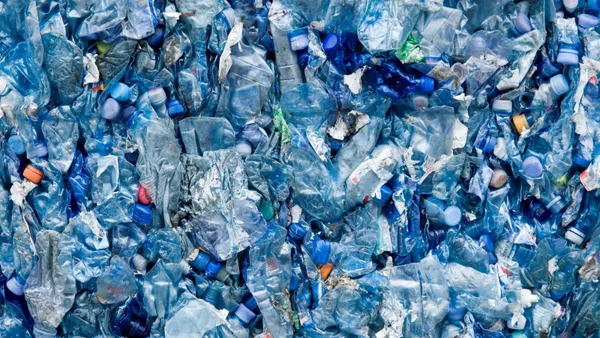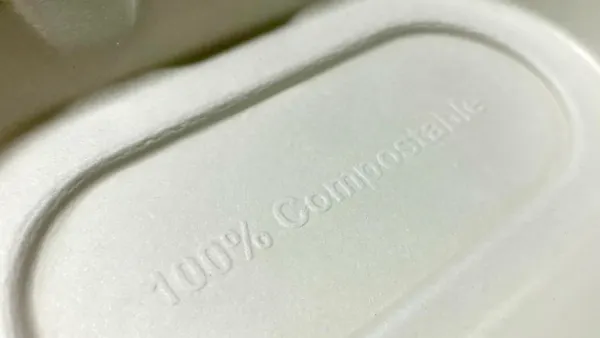The primary theme gleaned from a study published in the journal Science Advances, entitled "The Chinese import ban and its impact on global plastic waste trade," is that plastic is piling up globally, as recyclers deal with lost Chinese markets and have to resort to stockpiling or landfilling recovered materials.
Those in the recycling industry already know the story. But the study, which analyzed United Nations data from 1988 to 2016, delves deeper into challenges from the ban and conditions domestic recyclers face. It also offers recommendations for contending with what is turning out to be a growing, long-term industry transformation brought on by China's materials ban.
Waste Dive breaks down the main takeaways from the study.
Scrap plastic supply is rising, regardless of the ban
Primary plastic product production has boomed over the past several decades, growing from two million metric tons in 1950 to 322 million metric tons in 2015. Packaging is the largest plastics sector, at 40%, but much of that is made up of single-use items that do not get recycled. The study's researchers say only 9% of plastics get recycled globally and 80% ends up in a landfill or in the environment.
The materials ban does create a sudden market influx of materials because China has imported more than 45%, or 106 million metric tons, of recovered plastics since 1992, and the ban has therefore had "cascading impacts." That, combined with the fact that plastic production and use is projected to continue growing, means recyclers must find ways to adapt to and process the growing supply or stockpiles will only worsen. "[T]he quantity of plastic [scrap] needing a 'home' will continue to increase for the foreseeable future," the study says.
Wealthy countries are disproportionately affected
High-income countries (HIC) will be overwhelmingly affected by the loss of markets due to the materials ban because those countries predominate the scrap plastics trade, constituting 87% of all exports. Excluding Mexico, all of the top 10 plastics exporters — China/Hong Kong, United States, Japan, Germany, UK, Netherlands, France, Belgium, Canada — are HIC. This is in line with data that show HIC have exported waste and recyclables to lower-income and middle-income Eastern Asian and Pacific countries for decades.
Although other Asian countries have long accepted recyclables, researchers note their recycling infrastructure is not as developed as HIC and they do not have nearly enough capacity to absorb all the materials that had been going to China. In response, some of those countries, including Thailand and Vietnam, have already implemented their own temporary plastic bans and are working toward permanent measures.
Better domestic recycling infrastructure is needed
Recovered material sorters and processors are hesitant to invest in infrastructure upgrades because of hefty up-front capital expenditures and fears of not turning a profit. That has left the United States and other plastic exporting countries without an adequate number of domestic markets to fall back on following China's ban. The study notes if no adjustments are made, "then much of the waste originally diverted from landfills by consumers paying for a recycling service will ultimately be landfilled ... Both the displaced plastic waste and future increases in plastic recycling must be addressed immediately."
Since the countries most impacted by the ban have higher incomes, they therefore have more resources at their disposal to create the infrastructure necessary to build viable domestic markets.
Plastic products should be better designed for recyclability
Plastic products, and packaging in particular, present recycling challenges because of the high number that contain blended polymers or additives. Some processors won't even attempt to handle plastic packaging because many types don't hold value when recycled. Lightweight packaging such as film is a particularly challenging product from which to efficiently process and draw value. Researchers suggest redesigning plastic products to make them more recyclable and better able to hold their value. That could happen, for example, by standardizing packaging polymers and reducing polymer blending.









